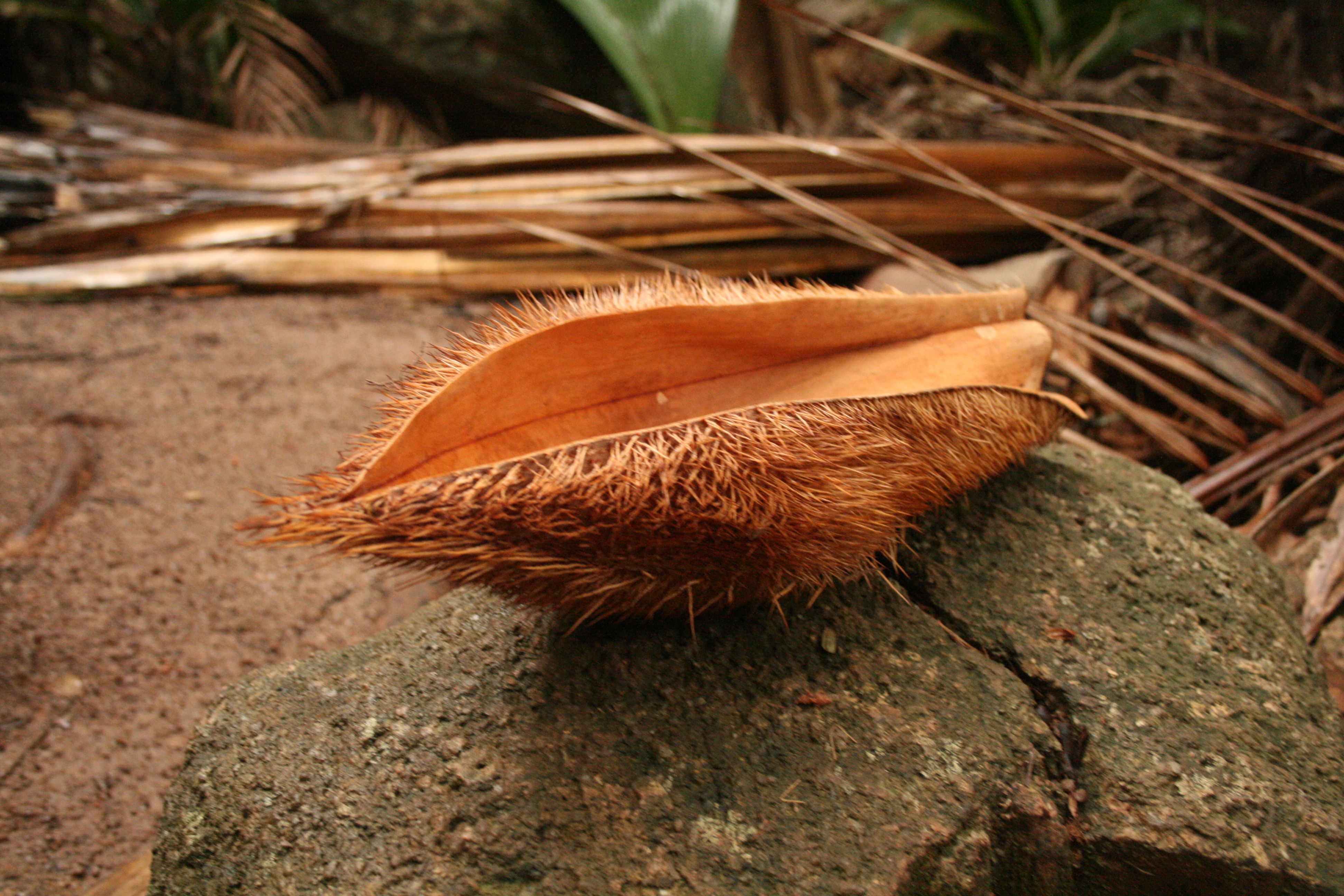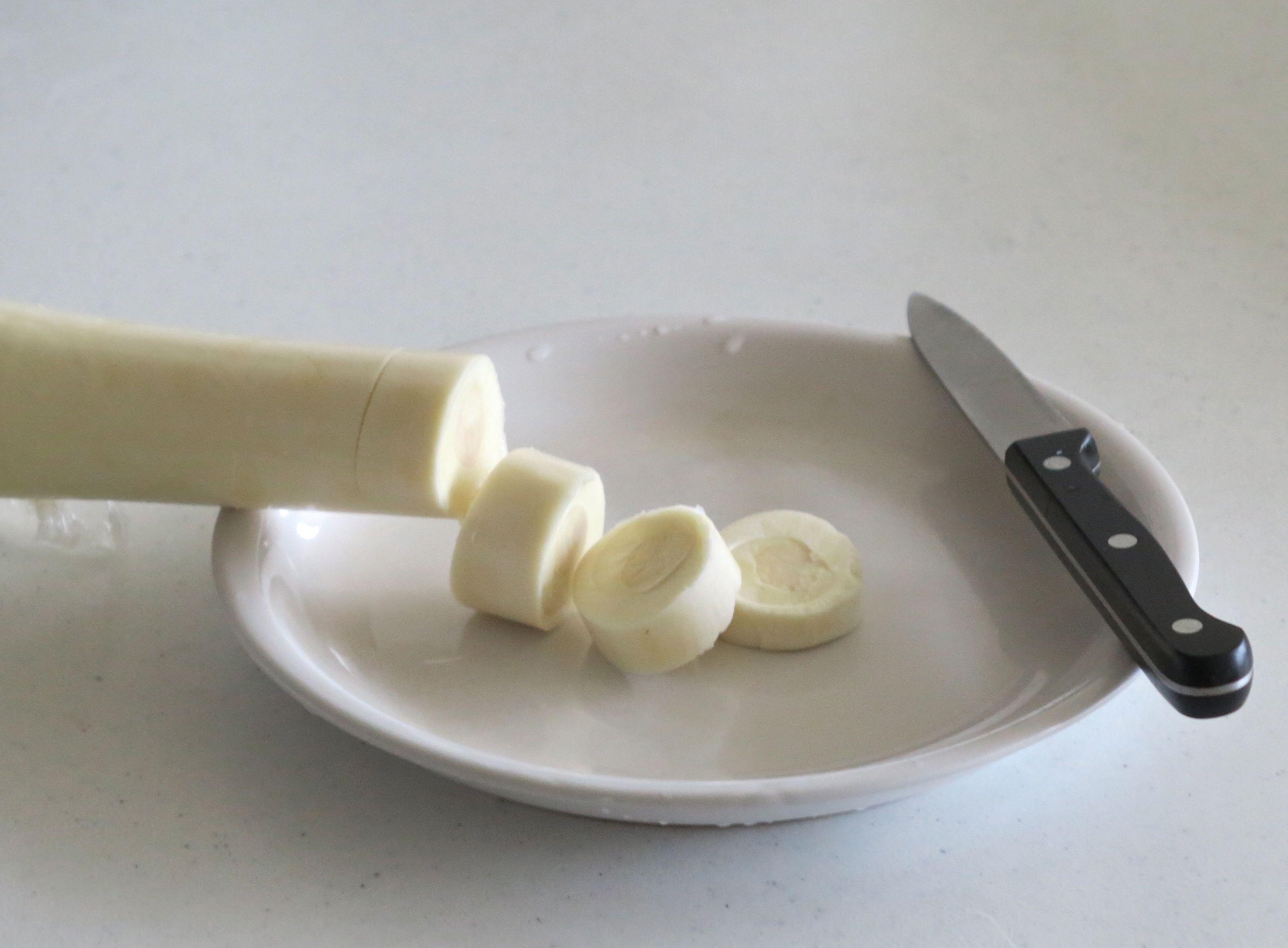|
Deckenia Nobilis
''Deckenia nobilis'' (cabbage palm or millionaire's salad) is a species of flowering plant in the family Arecaceae. It is monotypic within the genus ''Deckenia'', and is endemic to the Seychelles, where it is threatened by habitat loss. It was described in 1870. Description This species of palm tree has a distinctive spiny fruit, and produces yellow spines on the trunks of young specimens. Adults reach a height of 40 meters. Distribution and habitat ''Deckenia nobilis'' is endemic to the Seychelles. In the wild, it is found intermittently in lowland forests, at elevations up to 600 metres. It is in decline due to unregulated or illegal over-harvesting Overexploitation, also called overharvesting, refers to harvesting a renewable resource to the point of diminishing returns. Continued overexploitation can lead to the destruction of the resource, as it will be unable to replenish. The term ap ... of the edible palm hearts, but certain stands growing on rocky crags an ... [...More Info...] [...Related Items...] OR: [Wikipedia] [Google] [Baidu] |
Plants Described In 1870
Plants are predominantly photosynthetic eukaryotes of the kingdom Plantae. Historically, the plant kingdom encompassed all living things that were not animals, and included algae and fungi; however, all current definitions of Plantae exclude the fungi and some algae, as well as the prokaryotes (the archaea and bacteria). By one definition, plants form the clade Viridiplantae (Latin name for "green plants") which is sister of the Glaucophyta, and consists of the green algae and Embryophyta (land plants). The latter includes the flowering plants, conifers and other gymnosperms, ferns and their allies, hornworts, liverworts, and mosses. Most plants are multicellular organisms. Green plants obtain most of their energy from sunlight via photosynthesis by primary chloroplasts that are derived from endosymbiosis with cyanobacteria. Their chloroplasts contain chlorophylls a and b, which gives them their green color. Some plants are parasitic or mycotrophic and have lost the ability t ... [...More Info...] [...Related Items...] OR: [Wikipedia] [Google] [Baidu] |
Trees Of Seychelles
In botany, a tree is a perennial plant with an elongated stem, or trunk, usually supporting branches and leaves. In some usages, the definition of a tree may be narrower, including only woody plants with secondary growth, plants that are usable as lumber or plants above a specified height. In wider definitions, the taller palms, tree ferns, bananas, and bamboos are also trees. Trees are not a taxonomic group but include a variety of plant species that have independently evolved a trunk and branches as a way to tower above other plants to compete for sunlight. The majority of tree species are angiosperms or hardwoods; of the rest, many are gymnosperms or softwoods. Trees tend to be long-lived, some reaching several thousand years old. Trees have been in existence for 370 million years. It is estimated that there are some three trillion mature trees in the world. A tree typically has many secondary branches supported clear of the ground by the trunk. This trunk typically co ... [...More Info...] [...Related Items...] OR: [Wikipedia] [Google] [Baidu] |
Endemic Flora Of Seychelles
Endemism is the state of a species being found in a single defined geographic location, such as an island, state, nation, country or other defined zone; organisms that are indigenous to a place are not endemic to it if they are also found elsewhere. For example, the Cape sugarbird is found exclusively in southwestern South Africa and is therefore said to be ''endemic'' to that particular part of the world. An endemic species can be also be referred to as an ''endemism'' or in scientific literature as an ''endemite''. For example '' Cytisus aeolicus'' is an endemite of the Italian flora. '' Adzharia renschi'' was once believed to be an endemite of the Caucasus, but it was later discovered to be a non-indigenous species from South America belonging to a different genus. The extreme opposite of an endemic species is one with a cosmopolitan distribution, having a global or widespread range. A rare alternative term for a species that is endemic is "precinctive", which applies to s ... [...More Info...] [...Related Items...] OR: [Wikipedia] [Google] [Baidu] |
Oncospermatinae
Oncospermatinae is a palm tree subtribe in the tribe Areceae. Genera: *'' Acanthophoenix'' *'' Deckenia'' *'' Oncosperma'' *'' Tectiphiala'' References External links Arecaceae subtribes {{Areceae-stub ... [...More Info...] [...Related Items...] OR: [Wikipedia] [Google] [Baidu] |
Heart Of Palm
Heart of palm is a vegetable harvested from the inner core and growing bud of certain palm trees, most notably the coconut (''Cocos nucifera''), juçara (''Euterpe edulis''), açaí palm (''Euterpe oleracea''), palmetto (''Sabal'' spp.), and peach palm. Harvesting of many uncultivated or wild single-stemmed palms results in palm tree death (e.g. ''Geonoma edulis''). However, other palm species are clonal or multi-stemmed plants (e.g. ''Prestoea acuminata'', ''Euterpe oleracea''), and moderate harvesting will not kill the entire clonal palm. Heart of palm may be eaten on its own, and often it is eaten in a salad. There are palm varieties that have become domesticated farm species as an alternative to sourcing from wild palms. The main variety that has been domesticated is ''Bactris gasipaes'', known in English as peach palm. This variety is the most widely used for canning. Peach palms are self-suckering and produce multiple stems, with up to 40 on one plant. This lets producers ... [...More Info...] [...Related Items...] OR: [Wikipedia] [Google] [Baidu] |
Over-harvesting
Overexploitation, also called overharvesting, refers to harvesting a renewable resource to the point of diminishing returns. Continued overexploitation can lead to the destruction of the resource, as it will be unable to replenish. The term applies to natural resources such as water aquifers, grazing pastures and forests, wild medicinal plants, fish stocks and other wildlife. In ecology, overexploitation describes one of the five main activities threatening global biodiversity. Ecologists use the term to describe populations that are harvested at an unsustainable rate, given their natural rates of mortality and capacities for reproduction. This can result in extinction at the population level and even extinction of whole species. In conservation biology, the term is usually used in the context of human economic activity that involves the taking of biological resources, or organisms, in larger numbers than their populations can withstand. The term is also used and defined some ... [...More Info...] [...Related Items...] OR: [Wikipedia] [Google] [Baidu] |
Hermann Wendland
Hermann Wendland (October 11, 1825 in Herrenhausen – January 12, 1903 in Hanover) was a German botanist and gardener. He was a noted authority on the family Arecaceae (palms), on which he published a major monograph which formed the basis for the modern classification of the family, including many of the generic names currently in use. The South American palm genus ''Wendlandiella ''Wendlandiella'' is a genus of one species of palms found in Peru, Bolivia and Acre state in Brazil Brazil ( pt, Brasil; ), officially the Federative Republic of Brazil (Portuguese: ), is the largest country in both South America and ...'' is named after him. Publications * ''Die Königlichen Gärten zu Herrenhausen bei Hannover'' (Hannover, 1852) * ''Index palmarum, cyclanthearum, pandanearum, cycadearum, quae in hortis europaeis coluntur'' (Hannover, 1854). Taxonomist References External linksPACSOA biography German gardeners German taxonomists 1825 births 1903 deaths ... [...More Info...] [...Related Items...] OR: [Wikipedia] [Google] [Baidu] |
International Plant Names Index
The International Plant Names Index (IPNI) describes itself as "a database of the names and associated basic bibliographical details of seed plants, ferns and lycophytes." Coverage of plant names is best at the rank of species and genus. It includes basic bibliographical details associated with the names. Its goals include eliminating the need for repeated reference to primary sources for basic bibliographic information about plant names. The IPNI also maintains a list of standardized author abbreviations. These were initially based on Brummitt & Powell (1992), but new names and abbreviations are continually added. Description IPNI is the product of a collaboration between The Royal Botanic Gardens, Kew (Index Kewensis), The Harvard University Herbaria (Gray Herbarium Index), and the Australian National Herbarium ( APNI). The IPNI database is a collection of the names registered by the three cooperating institutions and they work towards standardizing the information. The stan ... [...More Info...] [...Related Items...] OR: [Wikipedia] [Google] [Baidu] |



.jpg)

